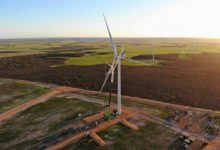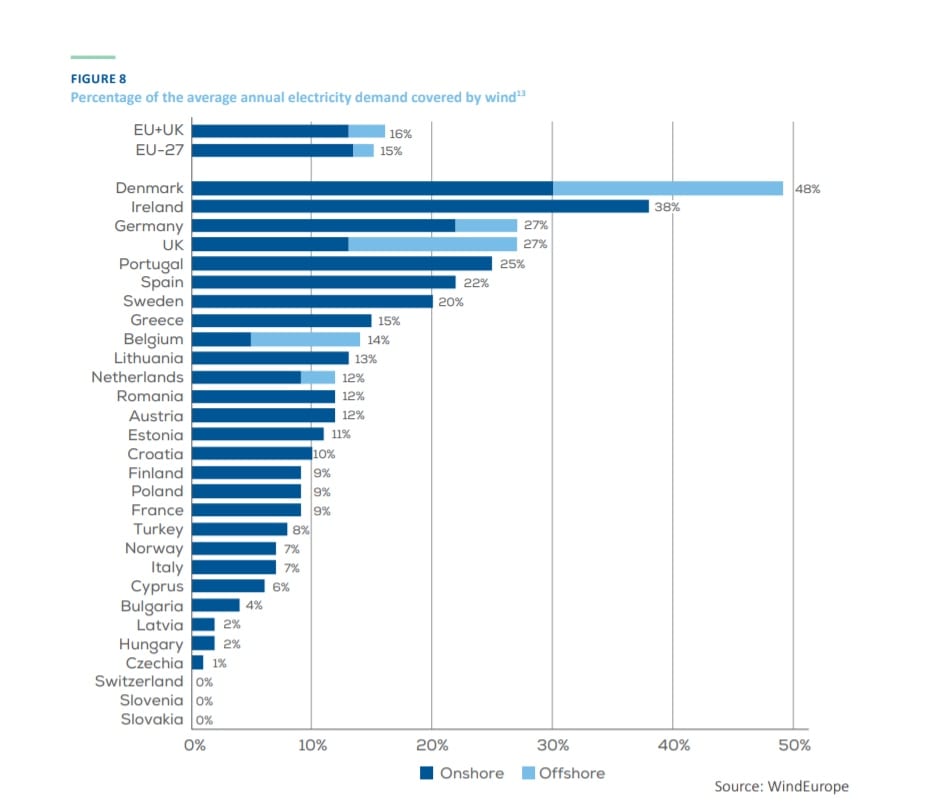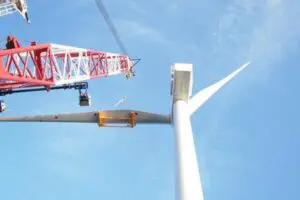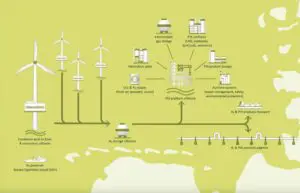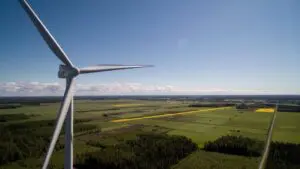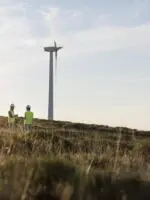Wind power in Europe withstood the worst of Covid-19, with 14.7 gigawatts of new capacity installed over 2020 but faces a series of new and old challenges to sustain the growth needed to hit climate targets, as shown in industry group Wind Europe’s 2020 statistics report.
The installations of 14.7 gigawatts was 6% less than 2019, and 19% less than what Wind Europe expected before they were aware of the impacts of COVID19. The Netherlands installed most total wind capacity in 2020, mostly offshore wind power, while Norway installed most onshore wind.
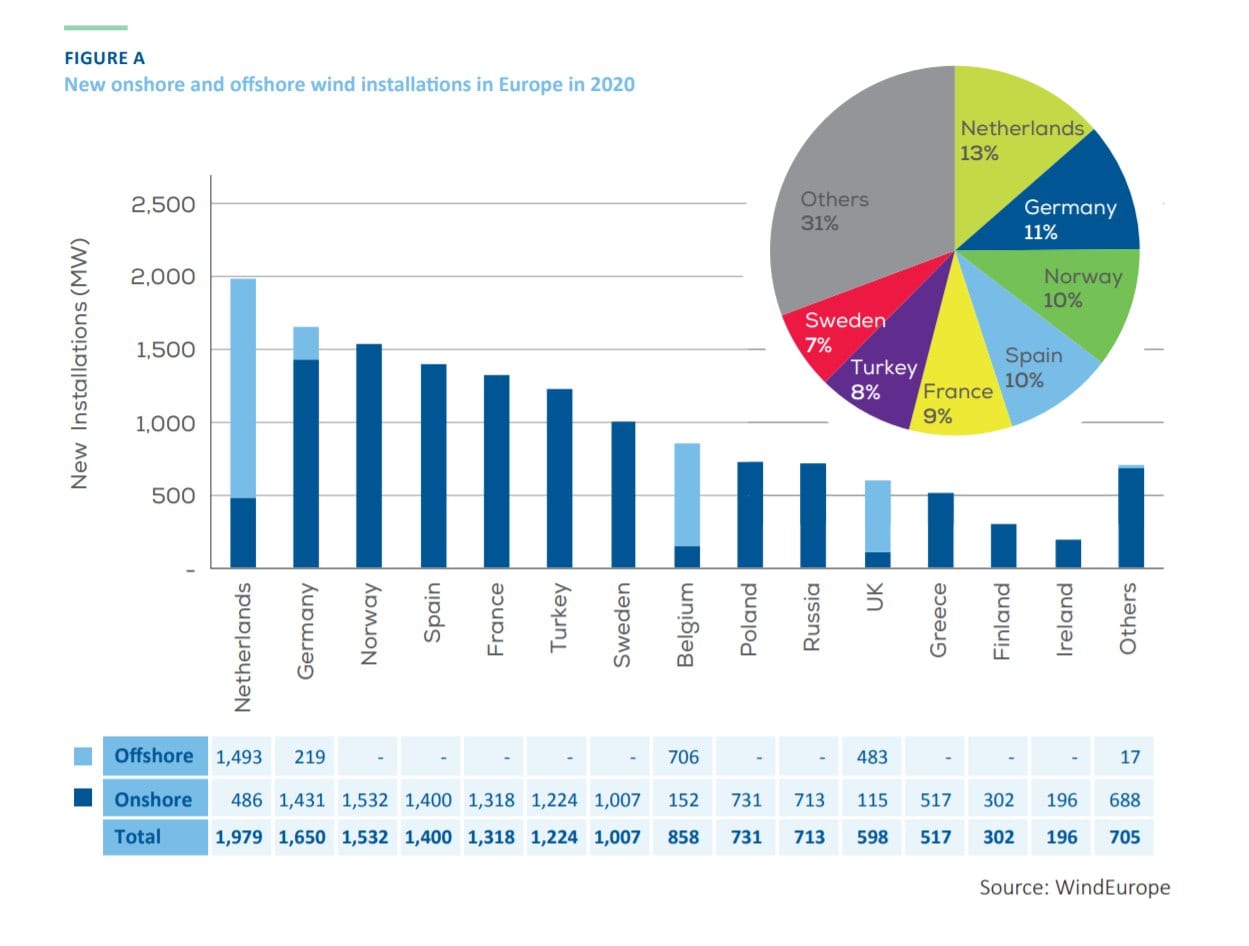 “Despite these successes, we fell short of several targets we had set for 2020. We expected to install around 21 GW during the year. And with the newly revised 2030 climate targets, we’re quite far off where we need to be as an industry if we are to help reach this goal,” said Wind Europe CEO Giles Dickson.
“Despite these successes, we fell short of several targets we had set for 2020. We expected to install around 21 GW during the year. And with the newly revised 2030 climate targets, we’re quite far off where we need to be as an industry if we are to help reach this goal,” said Wind Europe CEO Giles Dickson.
He also expressed concern about an aging wind power fleet reaching retirement, and insufficient repowering of those turbines. “388 MW were fully decommissioned across Europe during 2020, while 345 MW were repowered – a net loss of 40 MW. If we want to safeguard more of our existing capacity, we need to better address the end-of-life question and encourage repowering wherever we can going forward”.
A recent report into German wind power found that repowering the country’s relatively older models with new, higher capacity turbines could decrease the land footprint of those wind farms while significantly increasing power output.
The organisation expects Europe to install 105 gigawatts of new wind power over 2021 to 2025, with 70% of that comprised of onshore wind. However, if governments fail to put in place repowering strategies, loosen permitting and if COVID19 impacts worsen, this could be at or lower than 80 gigawatts.
 Germany remains the leader in European wind power, with a total installed capacity of 63 gigawatts, partly due to the large size of the country and consequent higher electricity demand. It has the third highest share of total generation in 2020, with 27% Ireland is the second highest, at 38% and Denmark has a 48% share. Despite Norway having the highest absolute capacity of onshore wind installation in 2020, it only has a share of 7% wind power in 2020. Wind power produced 458 total terawatt hours of energy in 2020, 16% of the total 2,797 terawatt hours in the EU.
Germany remains the leader in European wind power, with a total installed capacity of 63 gigawatts, partly due to the large size of the country and consequent higher electricity demand. It has the third highest share of total generation in 2020, with 27% Ireland is the second highest, at 38% and Denmark has a 48% share. Despite Norway having the highest absolute capacity of onshore wind installation in 2020, it only has a share of 7% wind power in 2020. Wind power produced 458 total terawatt hours of energy in 2020, 16% of the total 2,797 terawatt hours in the EU.
Germany’s wind power continues to struggle with limitations on growth around permitting and community backlash. “In Germany six out of the seven onshore wind auctions held in 2020 were undersubscribed. Only 2.7 GW out of the 3.9 GW on offer were awarded because there weren’t enough projects permitted”, wrote the authors of the report.
The report also includes data on the variability of wind power output throughout Europe, illustrating the range of potential output within a 10% to 90% probability (P10 to P90). Output is generally higher in winter months, but with a wider range of potential output, and lower in summer with a narrower range of output.
 The group’s CEO also highlighted the need to ensure that Europe’s post-covid economic stimulus packages are directed towards green options, such as the growth of wind power, EV charging and sustainable cities.
The group’s CEO also highlighted the need to ensure that Europe’s post-covid economic stimulus packages are directed towards green options, such as the growth of wind power, EV charging and sustainable cities.

